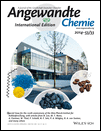Catalytic Biorefining of Plant Biomass to Non-Pyrolytic Lignin Bio-Oil and Carbohydrates through Hydrogen Transfer Reactions†
The funds for this research were provided by the Alexander von Humboldt Foundation (Sofja Kovalevskaja Award 2010). This work was performed as part of the Cluster of Excellence “Tailor-Made Fuels from Biomass”, funded by the German Federal and State governments to promote science and research at German universities. We also thank the Max Planck–Fraunhofer Cooperation Scheme for financial support.
Graphical Abstract
Lignin finds its true destiny: A catalytic biorefining method results in the isolation of depolymerized lignin, that is, a non-pyrolytic lignin bio-oil, in addition to pulps that are amenable to enzymatic hydrolysis. The lignin bio-oil is highly susceptible to hydrogenation under mild conditions, and therefore, a unique pathway for lignin valorization by heterogeneous catalysis has been established.
Abstract
Through catalytic hydrogen transfer reactions, a new biorefining method results in the isolation of depolymerized lignin—a non-pyrolytic lignin bio-oil—in addition to pulps that are amenable to enzymatic hydrolysis. Compared with organosolv lignin, the lignin bio-oil is highly susceptible to further hydrodeoxygenation under low-severity conditions and therefore establishes a unique platform for lignin valorization by heterogeneous catalysis. Overall, the potential of a catalytic biorefining method designed from the perspective of lignin utilization is reported.





